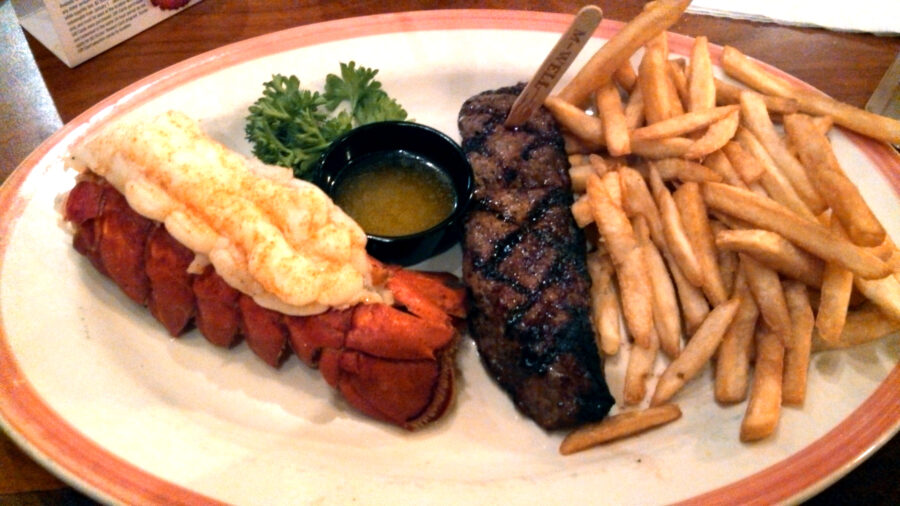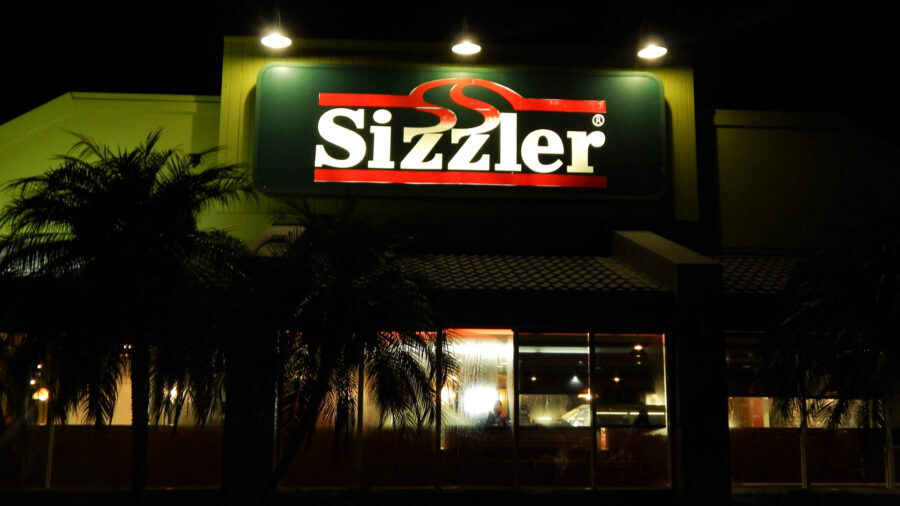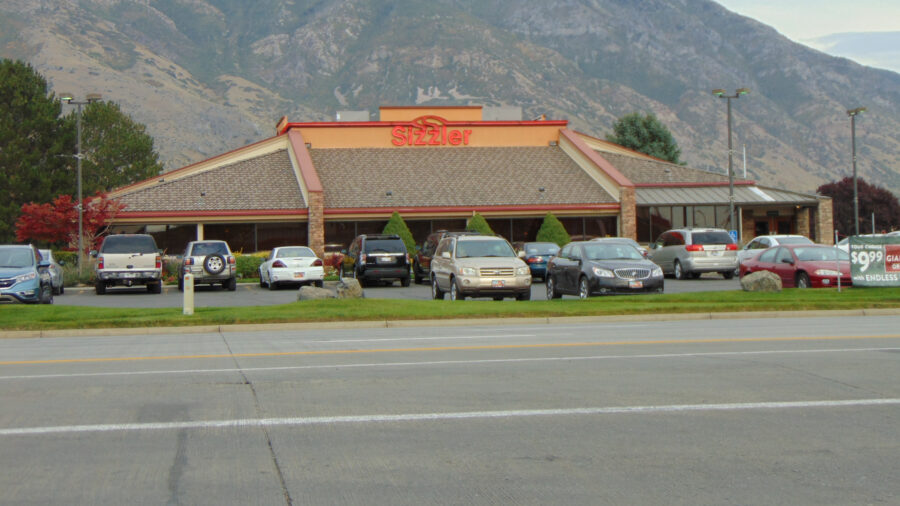This Iconic Restaurant Chain Just Filed For Bankruptcy
Another iconic establishment is feeling the effects of the pandemic. This restaurant bankruptcy could spell doom for the chain.
This article is more than 2 years old

The list of casualties is immense. The numbers are staggering. If we were speaking about the physical toll COVID has taken on the country, the numbers are eye-popping. But we are not talking about peoples’ deaths here. We are talking about the deaths of businesses, small and large. Those numbers are sad and COVID just claimed another business. This one comes in the form of one of America’s first steakhouse chains, Sizzler, which has filed for restaurant bankruptcy.
Granted, filing for restaurant bankruptcy doesn’t necessarily mean the death of a restaurant business. It can mean a positive restructuring of funds. Such could be the case for Sizzler USA. The 62-year old company announced their filing for Chapter 11 specifically because of COVID-19, which had forced the chain of restaurants to temporarily close its dining rooms, as it did with most other restaurants.
The silver lining here, if there is one, is that when Sizzler USA filed Chapter 11, it only filed for their 14 company-owned restaurants. Their more than 90 franchised restaurants and international locations are not involved with the Chapter 11 filing. In their press release, Sizzler explained that the filing for the restaurant bankruptcy will be used to reduce their heavy debt and also to renegotiate their leases.
Sizzler president Chris Perkins said in his statement via Restaurant Business, “Our current financial state is a direct consequence of the pandemic’s economic impact due to long-term indoor dining closures and landlords’ refusal to provide necessary rent abatements.” The statement also said, “Today’s filing represents a new chapter for Sizzler and it’s an option we’ve undertaken based on the underlying strength of our 62-year-old legacy brand. Many restaurant brands across the country have suffered because of COVID-19, and Sizzler USA is no exception.”

The restaurant chain is based in Mission Viejo, California, and operates 107 locations. They announced that it has between $1 million and $10 million in liabilities with close to the same amount in assets. They also said they expect to come out of the bankruptcy process in 120 days.
The Sizzler restaurants are mainly West Coast affiliated; the chain began back in 1958 in Culver City, California with a simple motto that, according to their website, is “everyone could enjoy a great steak dinner at an affordable price.” For the longest time, they lived up to that goal. They pioneered the affordable steakhouse and became a staple along the West Coast. The introduction of chains such as TGI Fridays and Applebee’s took away some of Sizzler’s dominance, but the chain hung around. It took the COVID pandemic to take them down. Hopefully, their restructuring will be the answer. What the answer will be for the many other closing businesses is sadly anyone’s guess.

The list of business closures is crippling. Even before the COVID pandemic hit, many businesses were on shaky footing. The retail business had been hit hard with Amazon begin to dominate the market. Some restaurant chains were slipping due to the advent of online ordering and delivery. Movie theater chains were seeing a sharp reduction as movie streaming giants such as Netflix and now Disney+ began to make their way into households, not to mention the exorbitant price in just getting into a movie theater. It wouldn’t take much to push many of these businesses over the edge. Enter COVID-19 and their big, pandemic hand.
Some of the names are popular. They include Neiman Marcus, Gold’s Gym, J. Crew, JC Penny, Hertz, Pier 1 Imports, 24 Hour Fitness, California Pizza Kitchen, Fuddruckers, Luby’s, and now, Sizzler USA. This is just the tip of the iceberg. There are countless thousands of small businesses that have gone under. Most of them will never return. Families have been devastated. The promise of saving small businesses came and went quickly. The relief was limited and if you didn’t get in fast, you didn’t get in at all.












